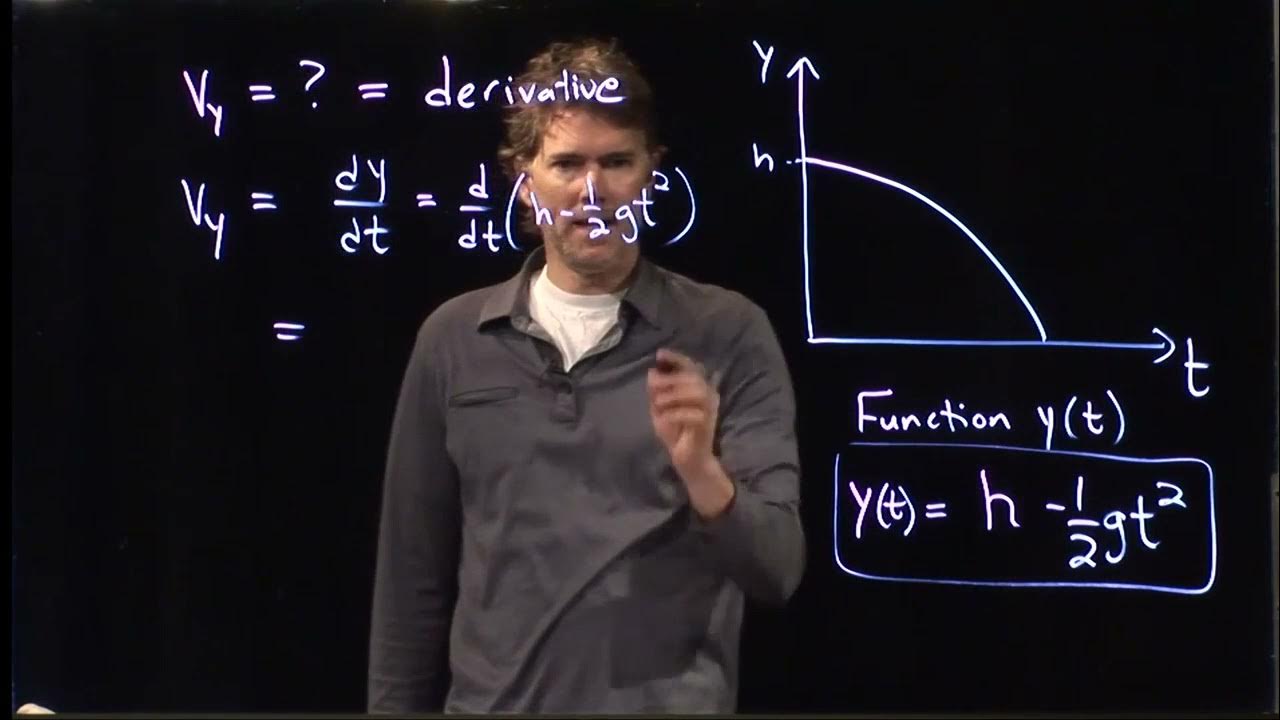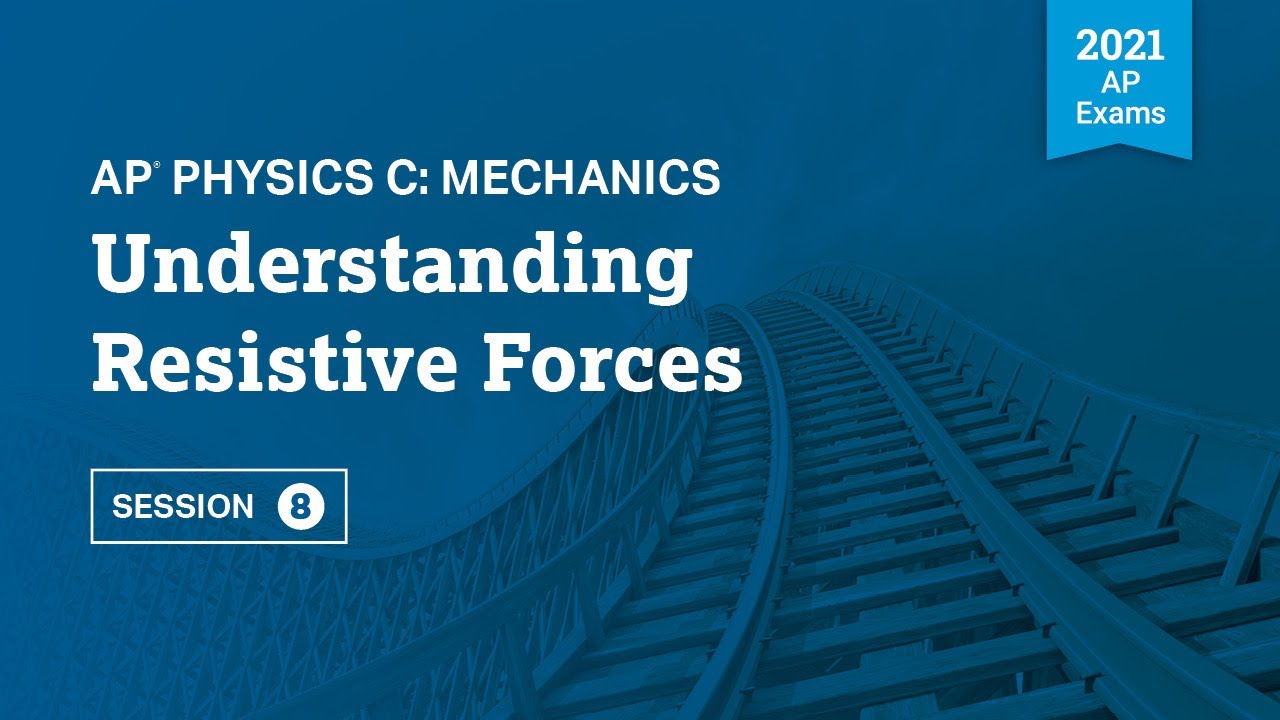College Physics 1: Lecture 9 - Motion With Constant Acceleration
TLDRIn this physics lecture, the instructor delves into the dynamics of motion with constant acceleration, introducing three fundamental kinematic equations. These equations relate position, velocity, and acceleration over time, enabling the prediction of an object's future state. The lecture also explores the concept of free fall, emphasizing that all objects in free fall experience the same acceleration due to gravity, regardless of their mass. The instructor uses the famous Apollo 15 moon experiment to illustrate this principle, where a feather and a hammer fall at the same rate in the absence of air resistance. The session concludes with thought-provoking questions to reinforce the concepts covered, setting the stage for solving real-world physics problems in the subsequent lecture.
Takeaways
- 📚 The lecture introduces three key equations for motion with constant acceleration.
- 🔍 The first equation is derived from the definition of acceleration, which is the change in velocity over time, and is rearranged to solve for final velocity.
- 📉 The second equation, the position equation, is derived by calculating the area under the velocity-time graph, which represents the displacement of an object.
- 🎯 The third equation is a time-independent velocity equation that relates the final velocity squared to the initial velocity squared, acceleration, and displacement.
- 🚀 The equations are applicable to both horizontal and vertical motion, with special attention given to the latter in the context of free fall.
- 🌕 Free fall motion occurs under the influence of gravity alone, ignoring air resistance, and results in the same acceleration for all objects regardless of their mass.
- 🌌 The Apollo 15 lunar experiment demonstrated that in the absence of air resistance, all objects fall at the same rate due to gravity.
- 📉 The acceleration due to gravity always points downward and has a magnitude of approximately 9.8 m/s² on Earth.
- 🤔 The lecture concludes with questions that challenge students to apply the concepts of constant acceleration, even when the velocity is zero at the peak of an object's motion.
- 📈 The velocity-time graph for an object in free fall shows a constant negative slope, indicating a constant deceleration (or acceleration downwards).
- 🔚 The lecture sets the stage for solving real-world problems using the derived equations in the subsequent lecture.
Q & A
What are the three main equations introduced in the lecture for motion with constant acceleration?
-The three main equations introduced are: 1) The velocity equation, which states that the final velocity (v_x_final) is equal to the initial velocity (v_x_initial) plus the product of acceleration (ax) and time interval (delta t). 2) The position equation, which allows you to find the final position of an object by adding the initial position to the area under the velocity-time graph. 3) The time-independent velocity equation, which relates the final velocity squared to the initial velocity squared, acceleration, and displacement (delta x), without the need to know the time interval.
Why is it important to derive the equations rather than just presenting them?
-Deriving the equations helps students understand the underlying concepts and the logic behind each equation. It's not just about memorizing the equations but also about grasping how they are connected to the fundamental principles of physics, such as acceleration and displacement.
What is the significance of the area under the velocity graph in determining displacement?
-The area under the velocity graph represents the displacement of an object over time. Since displacement is the change in position, the area under the graph (which can be a combination of a rectangle and a triangle in the case of constant acceleration) gives the total distance the object has moved from its initial position.
How does the final velocity equation relate to the other two main equations?
-The final velocity equation is derived by combining the first equation (velocity equation) and the position equation. It is a rearrangement that allows you to solve for the final velocity without needing to know the time interval, making it useful for problems where time is not given.
What is the definition of free fall motion?
-Free fall motion is the motion of an object under the sole influence of gravity, ignoring other forces such as air resistance. In free fall, objects experience the same acceleration regardless of their mass.
Why is it important to ignore air resistance when analyzing free fall motion?
-Ignoring air resistance simplifies the analysis of free fall motion, allowing for the assumption that all objects fall at the same rate when only gravity is acting on them. This simplification is crucial for accurately studying the effects of gravity on falling objects.
What is the acceleration due to gravity on Earth, and how does it affect free fall motion?
-The acceleration due to gravity on Earth is approximately 9.8 meters per second squared, directed downward. This constant acceleration affects free fall motion by causing objects to continuously increase their velocity as they fall, regardless of their mass.
Why do objects in free fall have the same acceleration, regardless of their mass?
-Objects in free fall have the same acceleration because the only force acting on them is gravity, which imparts the same acceleration to all objects, regardless of their mass. This is demonstrated by the fact that in the absence of air resistance, all objects fall at the same rate.
What is the significance of the Apollo 15 lunar experiment with the hammer and feather?
-The Apollo 15 lunar experiment with the hammer and feather demonstrated that in the absence of air resistance, all objects fall at the same rate when only gravity is acting on them. This experiment highlighted the principle of free fall motion, showing that mass does not affect the acceleration due to gravity.
How does the direction of an object's motion affect the direction of its acceleration during free fall?
-During free fall, the direction of an object's acceleration is always downward, regardless of the direction of its motion. Even if an object is moving upward, its velocity decreases due to the downward acceleration caused by gravity.
What does the velocity graph of an object launched vertically upward look like, and how does it relate to the object's motion?
-The velocity graph of an object launched vertically upward shows a positive, decreasing velocity as it moves upward against gravity, a zero velocity at the peak of its trajectory, and a negative, increasing velocity as it falls back down. The graph reflects the constant negative acceleration due to gravity throughout the motion.
Outlines
📚 Introduction to Constant Acceleration Motion
This paragraph introduces the topic of motion with constant acceleration, contrasting it with uniform motion where velocity remains constant. The lecturer emphasizes the importance of three fundamental kinematic equations that describe the motion of objects under constant acceleration. The aim is to derive these equations during the lecture and apply them to solve problems in the subsequent one. The first equation derived relates acceleration to the change in velocity over time, which is rearranged to solve for the final velocity given the initial velocity and constant acceleration.
📐 Derivation of Position and Velocity Equations
The lecturer delves into the derivation of the position equation by considering the area under a velocity-time graph, which represents displacement. The area is calculated by summing the area of a rectangle and a triangle, leading to an equation that relates initial velocity, acceleration, and time to displacement. Additionally, a second velocity equation is introduced, which is independent of time, and is derived by substituting the expression for time from the first velocity equation into the position equation. This results in a relationship between final velocity, initial velocity, acceleration, and displacement without the need for the time variable.
🌓 Exploring Free Fall and Vertical Motion
The discussion shifts to vertical motion, specifically free fall, where an object moves solely under the influence of gravity, ignoring air resistance. The lecturer clarifies that all objects in free fall, regardless of their mass, experience the same acceleration due to gravity, which is directed downward. This concept is exemplified by the Apollo 15 moon experiment, where a hammer and a feather fell simultaneously in the absence of air resistance. The paragraph concludes with an analysis of the motion, emphasizing that the acceleration due to gravity always points downward, regardless of the object's direction of motion.
🔍 Analyzing the Trajectory and Velocity of a Projectile
The final paragraph focuses on the trajectory and velocity graph of an object launched vertically upward. It addresses common misconceptions regarding the acceleration at the peak of the object's trajectory, confirming that the acceleration due to gravity remains constant and downward throughout the motion. The paragraph also poses questions to test understanding, including the acceleration at the highest point of a ball's trajectory and the shape of the velocity graph for an object's ascent and descent. The correct velocity graph is one that reflects a decreasing positive velocity during ascent and a constant negative slope during descent, indicating a constant negative acceleration.
Mindmap
Keywords
💡Constant Acceleration
💡Kinematic Equations
💡Velocity
💡Position
💡Displacement
💡Free Fall
💡Acceleration Due to Gravity
💡Vertical Motion
💡Air Resistance
💡Trajectory
Highlights
Introduction of three key equations governing motion with constant acceleration.
Derivation of the velocity equation from the definition of acceleration.
Explanation of how to predict future velocity using the velocity equation.
Introduction of the position equation derived from the area under the velocity graph.
Breakdown of the area under the velocity graph into a rectangle and a triangle for displacement calculation.
Derivation of the time-independent velocity equation, useful for problems without a time component.
Discussion on the importance of understanding the origin of equations for better application.
Introduction to vertical motion and the concept of free fall under the influence of gravity only.
Explanation that all objects in free fall have the same acceleration regardless of their mass.
Historical reference to Apollo 15 astronaut David Scott's feather and hammer experiment on the moon.
Description of a vacuum chamber experiment demonstrating the absence of air resistance in free fall.
Clarification that free fall acceleration always points downward on Earth with a value of 9.8 m/s².
Analysis of the velocity graph for an object in free fall, showing a constant decrease over time.
Question regarding the acceleration of a ball at its highest point in a vertical throw.
Discussion on the constant acceleration of an arrow during its entire vertical trajectory.
Question on determining the velocity graph for an arrow launched vertically upward.
Conclusion and preparation for solving real-world problems using the established framework of equations.
Transcripts
Browse More Related Video

College Physics 1: Lecture 12 - Projectile Motion

Free Fall Physics Problems - Acceleration Due To Gravity

Kinematic Equations in One Dimension | Physics with Professor Matt Anderson | M2-04

2021 Live Review 8 | AP Physics C: Mechanics | Understanding Resistive Forces

College Physics 1: Lecture 8 - Acceleration

Do Heavy Objects Actually Fall Faster Than Light Objects? DEBUNKED
5.0 / 5 (0 votes)
Thanks for rating: